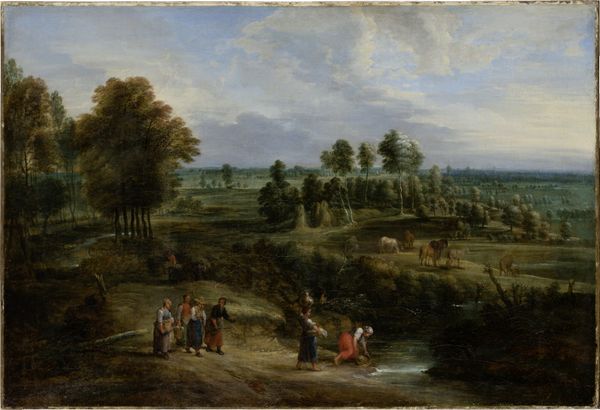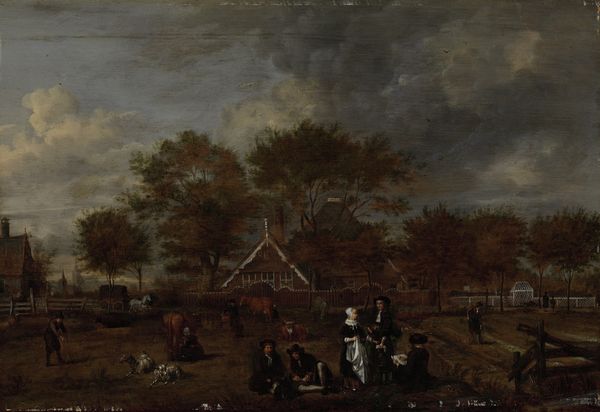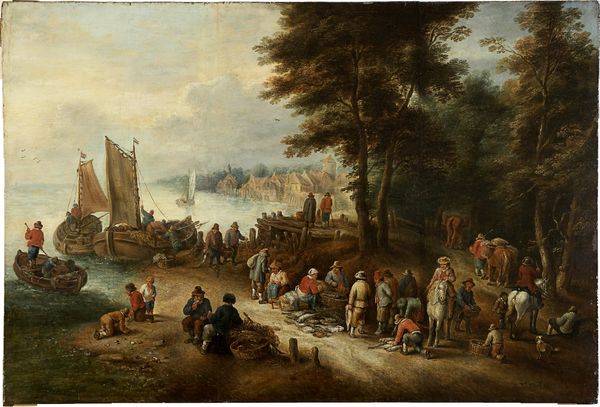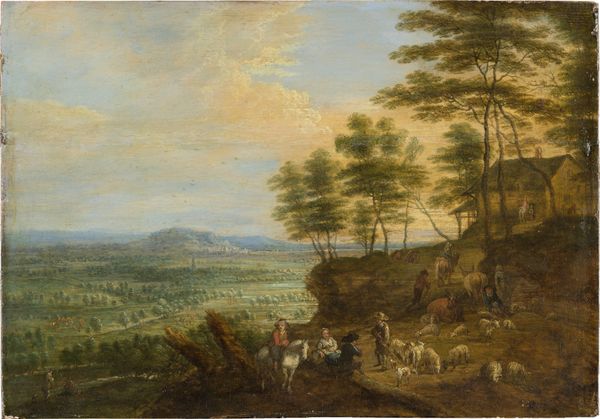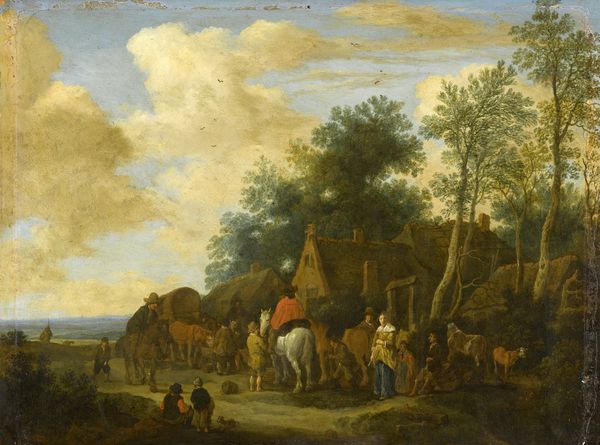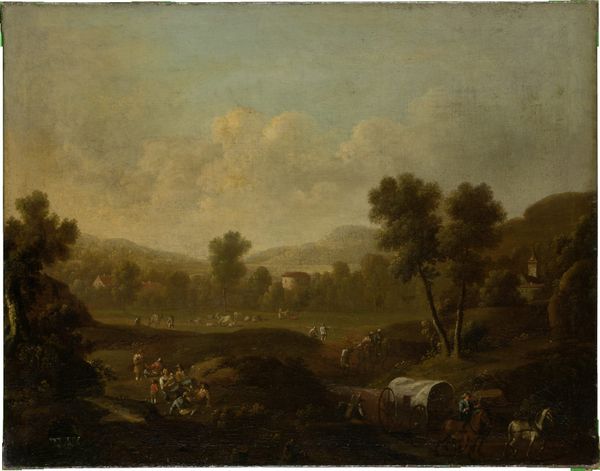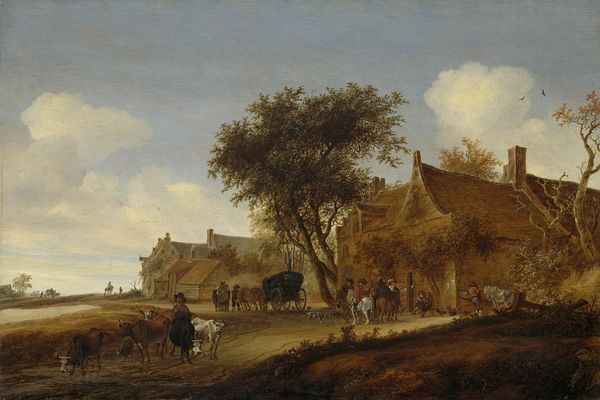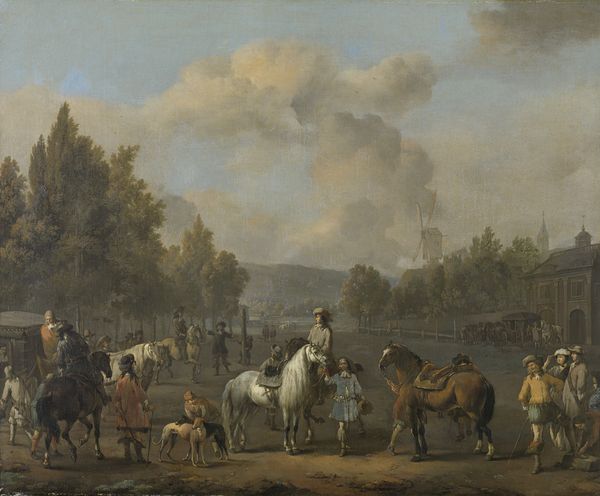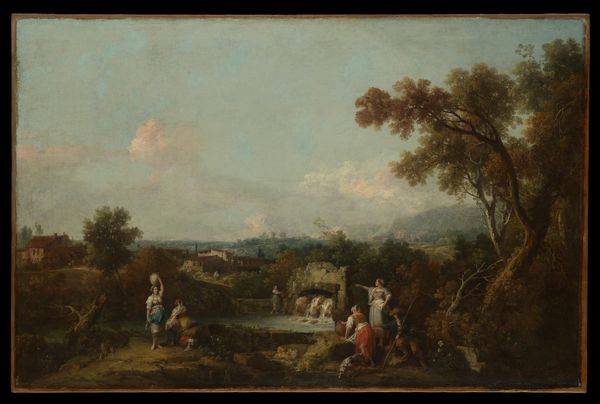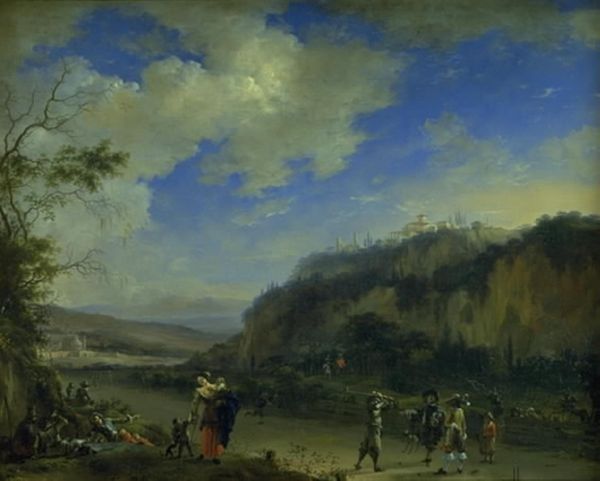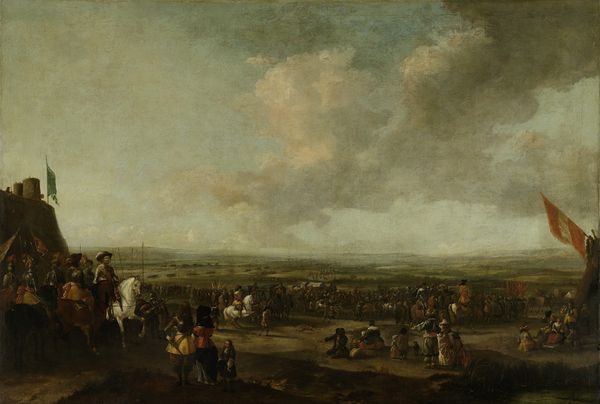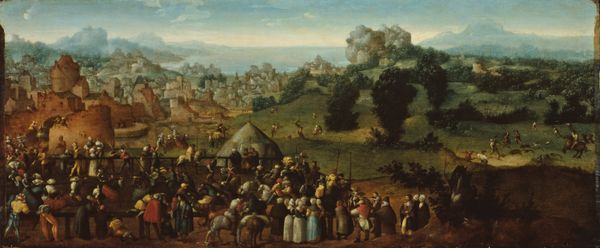
painting, oil-paint, oil
#
baroque
#
animal
#
painting
#
oil-paint
#
oil
#
landscape
#
figuration
#
oil painting
#
genre-painting
#
realism
#
building
Dimensions: 17.8 x 25.0 x min. 0.4 cm
Copyright: Public Domain
Curator: This is Lucas van Uden's "Landscape with Figures," an oil on canvas from around 1685 to 1690. It resides here at the Städel Museum. Editor: It feels quite provincial, doesn't it? A world unto itself, depicted with that subtle melancholic tone often present in such genre scenes of the Baroque era. Curator: Provincial life indeed—a stage where societal rituals unfold. Consider the central carriage: What statements about power, class, and status are conveyed by this mode of transport versus the walking figures? It visualizes hierarchy quite literally. Editor: Precisely. The contrast highlights the inherent inequities. We see an attempt to naturalize the rigid structure of the time; observe, for example, how some of the figures in the foreground appear weighed down by the work of daily existence. Are we meant to feel sympathetic or merely to observe the spectacle? Curator: It’s an opportunity to decipher codes of conduct and modes of existence. Uden draws from an established symbolic vernacular: animals symbolizing specific character traits; architectural motifs hinting at aspirations of permanence. Notice how these elements shape the atmosphere. Editor: Agreed. The buildings, while perhaps realistically rendered, subtly underscore themes of permanence and authority, creating a backdrop against which everyday struggles become magnified. This connects back to questions of who benefits and who toils. It’s about exposing these undercurrents. Curator: It is as much about preserving memory as it is about the critique of the visible. Look at how Uden invites the viewer to decipher, question, and consider the past. Editor: For me, viewing through a lens of power is central—recognizing the interplay between those represented and those, like us, observing. These are more than just pretty landscapes: they're active participants in complex narratives about who gets seen and whose stories get told. Curator: Very much so, allowing us to interpret the values and ideals embedded within 17th-century life. It's rewarding to unravel layers of meaning held within these seemingly simple scenes. Editor: Absolutely, remembering that those depictions carry not only aesthetic weight, but also represent living struggles and aspirations for a fairer existence.
Comments
No comments
Be the first to comment and join the conversation on the ultimate creative platform.
